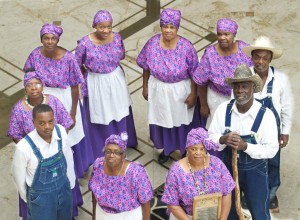
This week’s posts have highlighted the history and cultural significance of the Gullah Peoples of South Carolina.
American historians now recognize that the Gullah people of South Carolina and Georgia have come in large measure from the rice-growing region of West Africa—but they have not placed enough specific emphasis on Sierra Leone. Scholars have looked at shipping records on the American side which refer only very generally to the “Rice Coast” or “Windward Coast” as the origins of the slave cargoes, but they have not yet examined the histories of specific slave trading bases in West Africa, like Bance Island. They have also failed to look beyond documentary evidence, to the language and culture of the Gullah people. They have ignored the remarkable similarities between Gullah and Sierra Leone Krio, the high percentage of Gullah names and loanwords from Sierra Leonean languages; and the fact that all of the African texts remembered by modern Gullahs are in languages spoken in Sierra Leone, especially Mende.
It is now up to students of Sierra Leone to review the record of slave trading on both sides of the Atlantic for more evidence of the connection with South Carolina and Georgia. They must also examine the language and culture of the Gullah people against their own detailed knowledge of the languages and cultures of Sierra Leone. Studies of this sort will, no doubt, reveal even more evidence of significant historical and cultural connections.
The Black Seminoles are another subject requiring serious attention. We must recognize that 18th century Florida was, in many ways, an African frontier. The Gullah runaways were the only people capable of taming the Florida wilderness at that time. They possessed resistance to tropical diseases, knowledge of tropical agriculture, and a way of life remarkably unchanged from Africa. While the white American frontier was expanding west and south into a temperate climate suited to Europeans, an African frontier was developing in the swamps and jungles of Florida. When the two finally collided, there was a series of conflicts resulting in a full-scale “Negro War” lasting for six years and claiming hundreds of American lives. Scholars must examine the whole chain of events leading from the Rice Coast of Africa; to the rice plantations of South Carolina and Georgia; to the Florida wilderness, where rice agriculture and resistance to tropical diseases made possible a successful and independent life. Many U.S. soldiers died of malaria and yellow fever in the Florida Wars, but an American medical doctor of the period remarked that the Black Seminoles were “the finest looking people I have ever seen.” In a land deadly to whites, the Gullah frontiersmen not only survived, but prospered.
There is an enduring kinship between the Gullah people and the people of Sierra Leone. The modern Gullahs and Black Seminoles are especially interested in their African origins and proud of their African cultural heritage. Sierra Leoneans, on their part, have every reason to feel proud that a Black American community has been able to preserve so much Sierra Leonean cultural heritage, and that a portion of them waged the longest and fiercest struggle against slavery in United States history. It would be fitting for exchanges to take place between Sierra Leoneans and the Gullahs or Black Seminoles, and it seems certain that the two sides would have much to say to one another. A Sierra Leonean woman, doing graduate study at the University of South Carolina several years ago, chanced to meet some Gullah people on a brief holiday to the South Carolina sea shore. Recalling the experience much later, she remarked with amazement: “They speak our language!”
***Information courtesy of http://www.yale.edu/glc/gullah/10.htm***

